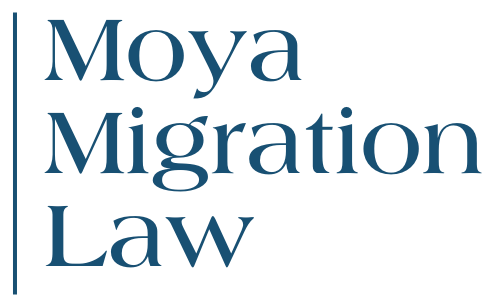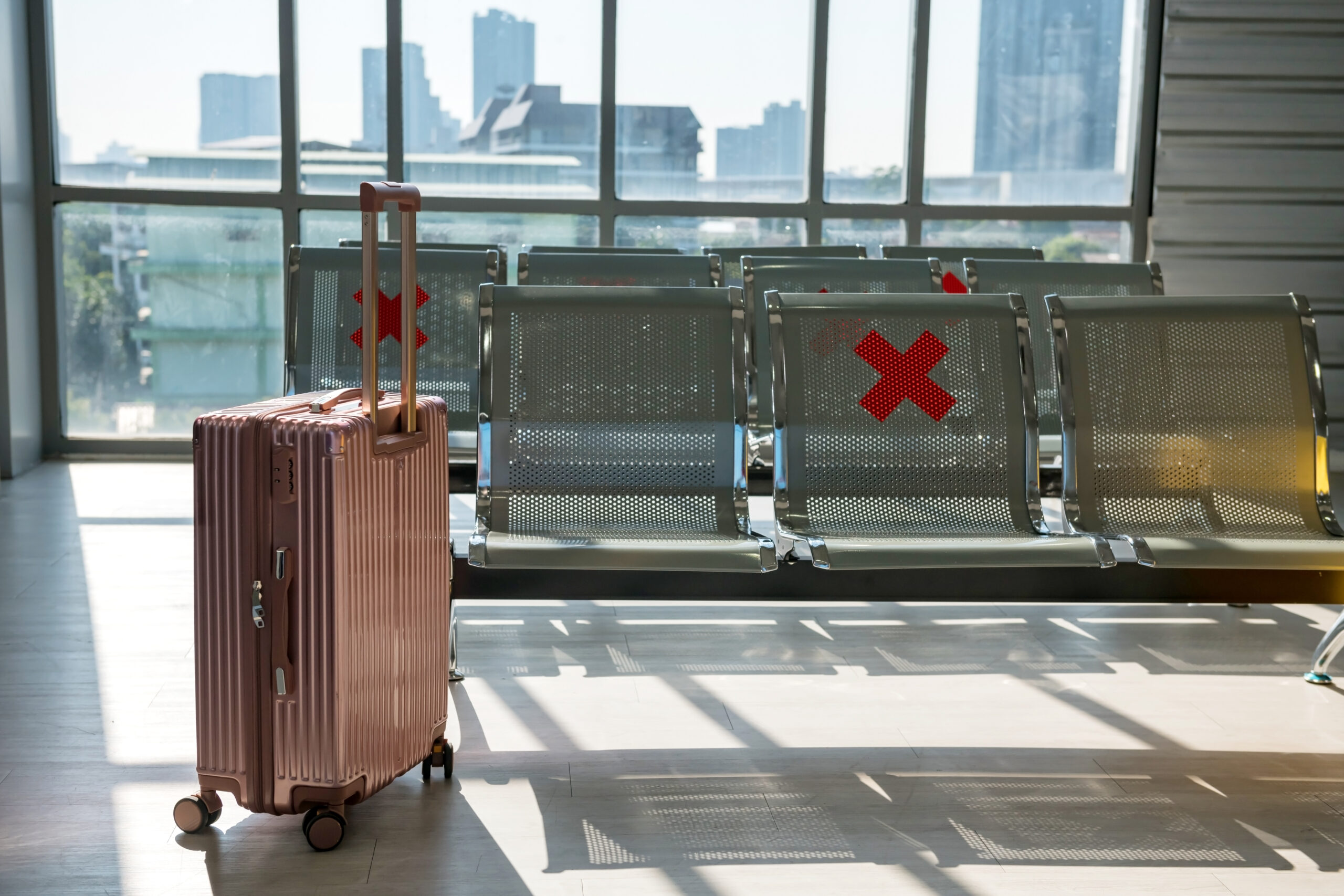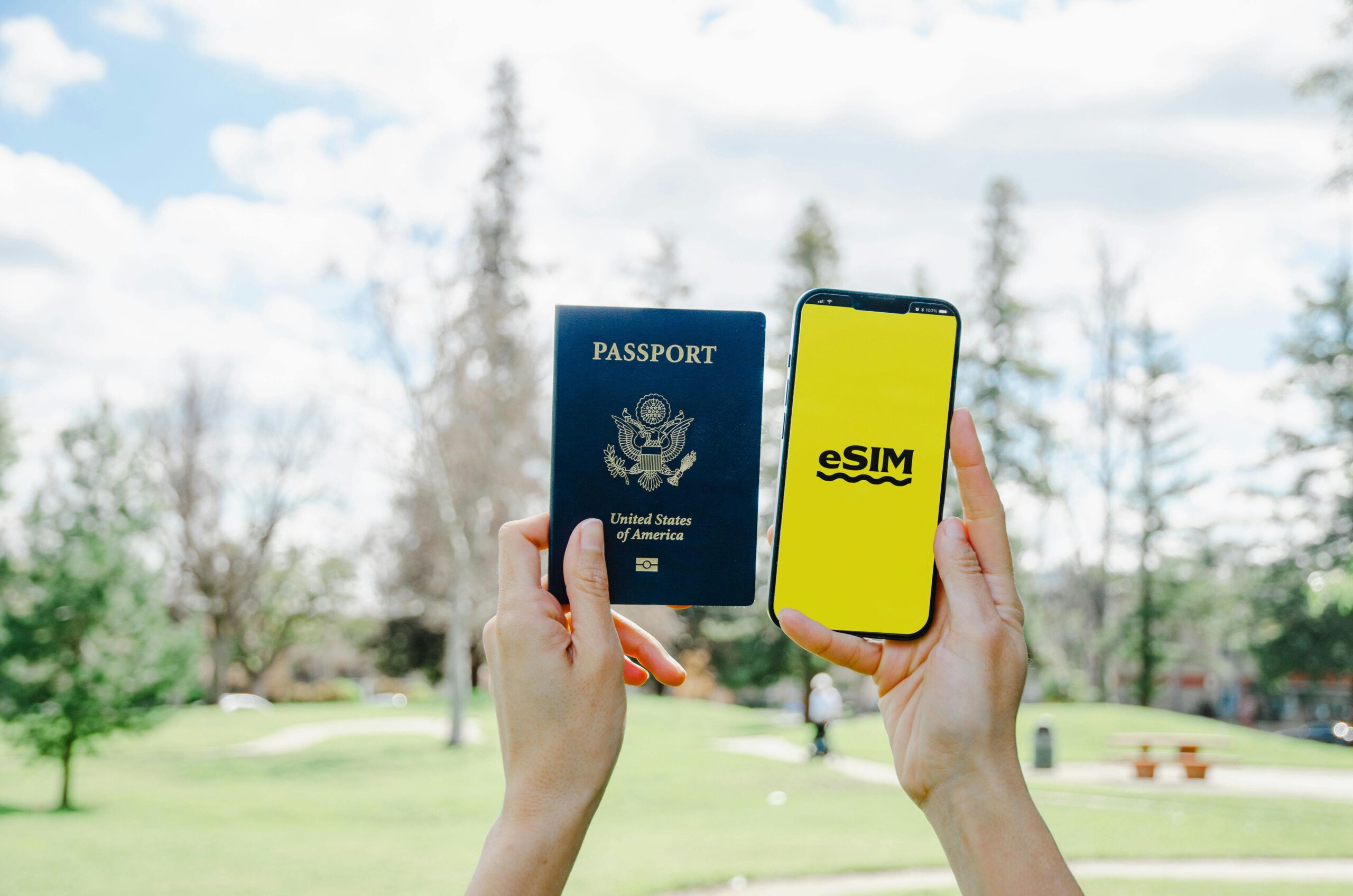Introduction
The introduction of the new Administrative Review Tribunal (ART), established under the Administrative Review Tribunal Act 2024 (Cth) (commenced 14 October 2024), has reshaped the landscape for reviewing a wide range of administrative decisions made by Australian Government entities, particularly those under the Migration Act 1958 (Cth) concerning visa applications.
Replacing the former Administrative Appeals Tribunal (AAT), the ART offers a critical mechanism of review, providing individuals whose visa applications have been refused or visas cancelled an essential opportunity to have their original decision re-examined independently and on its merits.
For those confronted with an unfavourable visa outcome, successfully navigating the procedures of the ART is key to effectively pursuing a review of a decision. This guide provides vital information and practical insights into the ART appeal process. It is designed to assist applicants in understanding their rights and the steps involved in lodging an application for review with this tribunal.
Do You Understand Your Eligibility and Deadlines for an ART Appeal for a Decision Review?
Identify if the ART Can Review the Decision of the Administrative Review
The ART has the authority to review a wide range of administrative decisions made by Australian Government ministers, departments, and agencies. This includes decisions under more than 400 pieces of federal legislation, covering areas such as migration, social security, taxation, and disability.
Specifically for visa and immigration matters, the ART’s Migration and Refugee (M&R) Division reviews decisions made by the Department of Home Affairs (DOHA) concerning visa applications and cancellations.
A decision is considered a ‘reviewable decision’ if an Act or legislative instrument explicitly states that an application can be made to the ART for its review. It is essential to understand that not all government decisions are reviewable by the ART.
The notification letter you receive from DOHA regarding your visa refusal or cancellation will specify whether the decision is reviewable by the ART. The Administrative Review Tribunal Act 2024 (Cth) defines what constitutes a ‘decision’ and a ‘reviewable decision’.
Under section 12(2) of the Administrative Review Tribunal Act 2024 (Cth), a ‘reviewable decision’ can be reviewed even if it was made by someone without lawful authorisation or in the absence of a proper delegation of power.
Certain decisions fall outside the ART’s jurisdiction. For example:
- The ART generally cannot review decisions made personally by the Minister for Home Affairs or the Minister for Immigration.
- If the legislation governing a particular type of decision does not provide a right to apply for ART review, the tribunal cannot hear the case.
For instance, an initial decision to mandatorily cancel a visa under section 501(3A) of the Migration Act 1958 (Cth) is not directly reviewable. The former visa holder must first ask DOHA to revoke the cancellation, and only a refusal to revoke may then be appealable to the ART.
Determine if You Can Apply to the ART for a Review
The Administrative Review Tribunal Act 2024 (Cth) outlines who can apply for a review of a decision. According to section 17(1), a person whose interests are affected by a reviewable decision may apply to the ART for a review of that decision. This can include:
- The visa applicant themselves,
- A former visa holder in the case of a visa cancellation,
- A sponsor or nominator in certain visa categories.
Specifically, in the context of visa refusals or cancellations:
- If you are in Australia and DOHA refused your visa application, you may be able to apply for a review.
- If you are in Australia and DOHA cancelled your visa, you may also be eligible.
- If your application to have a visa cancellation revoked was refused while you are in Australia, this decision may be reviewable.
- For visa applications lodged outside Australia where sponsorship or nomination is a requirement (e.g., employer-sponsored visas like the 482 Temporary Skill Shortage (TSS) or 186, partner visas, or family visas), the Australian sponsor or nominator may be the party entitled to apply for a review of the visa refusal.
- For Resident Return visas and Visitor visas where the applicant was outside Australia at the time of application, only a parent, spouse, child, brother, or sister of the visa applicant can apply for a review.
- Employers whose application for Standard Business Sponsorship has been refused can apply for a review.
The general principle is that if the visa applicant or holder is in Australia, they are usually the person who should apply for the review. Conversely, if the visa applicant is overseas, the Australian sponsor, nominator, or a specific family member (as defined for certain visa types) typically makes the application.
The notification letter from DOHA usually clarifies who is entitled to seek a review of that specific decision. Additionally, an organisation or association can also be considered a person whose interests are affected if the decision relates to a matter included in its objects or purposes.
Understand Time Limits for Your ART Appeal Application
Strict time limits are a critical aspect of applying to the ART for a review of a decision, and these deadlines are rigorously enforced. The ART generally has no discretion to extend these time limits for migration and protection decisions. If you miss the deadline, you will typically lose your right to an appeal.
The specific time limit for lodging an application for review depends on the type of decision being appealed and your circumstances, such as whether you are in immigration detention. These time limits can range from as short as seven working days to 70 calendar days.
Key timeframes include:
- For most migration and protection decisions, if the applicant is not in immigration detention, the application for review must generally be made within 28 days of being notified of the decision.
- If the person is in immigration detention, the timeframe to apply for a review of a migration or protection decision is often much shorter, typically seven working days from notification.
- For character-related decisions made under the Migration Act 1958 (Cth) where the applicant is in the migration zone (i.e., in Australia), an application must be made within 9 days of receiving the decision, and this time limit cannot be extended.
- Appeals under the Veterans’ Entitlements Act 1986 (Cth) must generally be brought to the ART within 3 months of receiving the review decision to preserve maximum payment benefits. However, appeals may be accepted up to 12 months, with potential impacts on backdating.
- For reconsideration decisions under the Military Rehabilitation and Compensation Act 2004 (Cth) by the Military Rehabilitation and Compensation Commission (MRCC), the appeal must be lodged within 60 days of receiving the decision.
The notification letter from DOHA will specify the period in which you can apply (e.g., “within 28 days”), but it will not state the actual end date. You must carefully calculate this deadline.
If the notification letter was sent by email, you are generally taken to have received it at the end of the day it was transmitted. For mailed letters, there might be an assumed period for delivery before the clock starts.
Request Your Free 15-Min Consultation
How Do You Lodge Your Appeal Application with the ART?
Apply to the ART Using Requisite Methods & Filling Forms
When you need to apply to the ART for a decision review, there are several methods available for lodging your application. The ART aims to provide an accessible mechanism of review, and consistent with this, offers flexibility in how you can submit your application.
You can lodge your visa tribunal appeal application in the following ways:
- Online: This is often the preferred and most straightforward method, using the ART’s online portal. You will typically need to create an account or use existing credentials to access the system. The online system guides you through the application process.
- In person: You can submit your application directly to any ART registry. Registries are located in each State and Territory.
- By email or fax: Application forms and supporting documents can also be sent via email or fax to the appropriate ART registry.
- By post: You can mail your completed application form and documents to an ART registry.
To apply for a review, you will need to complete an application form. For many migration reviews where the applicant is not in immigration detention, the relevant form is “Form M1—Application for review—migration.”
Other important forms include:
- “Form R1” for refugee/protection visa appeals
- Various other specialised forms that can usually be downloaded from the ART website
The Administrative Review Tribunal Act 2024 (Cth) specifies that an application for review may be made in writing or any other manner specified in the practice directions. For specific decisions, such as social security matters, the Common Procedures Practice Direction 2024 even allows for applications to be made by telephoning the registry and providing the necessary information.
Provide Essential Documents for Your ART Application
When lodging your application with the ART, it is crucial to include all essential documents to ensure your application is complete and can be processed efficiently. Failure to provide key documents can lead to delays or requests for further information.
The primary documents you will need to submit with your completed application form include:
- A copy of DOHA’s Notification of Refusal/Cancellation letter: This is the formal letter you received from DOHA informing you of the decision made on your visa.
- The accompanying Decision Record: This document sets out the detailed reasons for DOHA’s decision, including references to the legislative provisions relied upon. If you do not upload this document, the ART will likely request it.
- Identification documents: Copies of your passport are often required.
While these are the initial core documents, you should also supply the ART with any additional material that you believe supports your application. This can include a written statement explaining why you disagree with DOHA’s decision and any new evidence that was not previously submitted.
Although you can provide further documents after lodging your appeal via your online ART account, submitting as much relevant information as possible upfront can be beneficial. Section 34(2) of the Administrative Review Tribunal Act 2024 (Cth) states that an application must include the information specified for the application in the practice directions. However, section 34(3) clarifies that a failure to comply with this does not affect the validity of the application itself.
Understand ART Application Fees & Potential Reductions
Lodging an application for review with the ART for most migration decisions involves an application fee. As of early 2025, the standard application fee for most migration visa reviews is $3,496. It is important to check the ART website for the most current fee information, as these can change.
There are specific circumstances where fee policies differ:
- Protection visa decisions: Review of a Protection visa decision does not require an upfront application fee. However, if the review is unsuccessful, a fee of $2,151 will be payable.
- Bridging visa decisions leading to detention: No application fee is payable for a review of a bridging visa decision that results in the applicant being detained.
- Decisions under relevant statutes: For reviews of decisions under the Veterans’ Entitlements Act 1986 (Cth), Safety, Rehabilitation and Compensation (Defence-related Claims) Act 1988 (Cth), and the Military Rehabilitation and Compensation Act 2004 (Cth), no fees apply.
Applicants experiencing financial hardship may be eligible for a 50% reduction in the application fee. To apply for this reduction, you must first pay the full fee and then submit a request for a refund on this basis, providing evidence of financial hardship.
If your appeal to the ART is successful, you are entitled to a refund of 50% of the application fee you paid (this applies to either the full fee or the reduced fee if a reduction was granted). Furthermore, if your application is deemed invalid or if you withdraw your application in certain circumstances, a refund of all or part of the application fee may also be made.
The fee must be paid within the prescribed time, which is generally 28 days from lodging the application, unless the President allows a longer period in special circumstances.
Request Your Free 15-Min Consultation
What Steps Follow Lodging Your ART Application for a Tribunal Case?
Receive and Review Tribunal Documents After Submitting Your Appeal
After you lodge your application for review with the ART, you will typically receive an acknowledgement of your application. This initial communication, often an auto-generated email if you applied online, will confirm that the ART has received your appeal. It is important to note that this acknowledgement usually states that the validity of your appeal has not yet been formally assessed.
The ART will subsequently notify DOHA (the original decision-maker) that a review has been sought. DOHA then has a period, generally within 28 days, to provide the ART with all relevant case files and documents. These are commonly known as ‘T-documents’ or ‘Tribunal documents’.
These documents include:
- The decision you want reviewed
- All the information DOHA used in making that decision
The ART will then send copies of these T-documents to you or your representative. Access to these documents is crucial, as they allow you to understand the full basis of DOHA’s decision and prepare your case for the tribunal. In some instances, you may request these documents earlier if waiting the standard period would cause hardship.
If your application for review is considered valid, you may not receive further specific confirmation of its validity unless the ART has questions or identifies issues. The ART will contact you if there are any concerns about the validity of your application. Your review application will then be allocated to a Tribunal Member who will consider your case.
Provide Further Information & Submissions to the ART
The merits review process at the ART allows you to provide additional information and evidence to support your case, even after your initial application for review has been lodged. You can submit new material at any stage of the review process until the Tribunal Member makes a final decision. This includes submitting documents after a hearing, but before the Member finalises their decision.
ART’s online portal is often the recommended method for submitting new information if you use it for your initial application.
In addition to the documents you initially provided, such as DOHA’s decision letter and your reasons for disagreeing, you should supply the ART with any material you believe strengthens your application for review. This can include:
- A detailed written statement explaining why you believe DOHA’s decision was incorrect
- New evidence that was not available or not provided with your original visa application
- Written submissions that outline your arguments in detail, which should ideally be provided in advance of any hearing to allow the Member sufficient time to review
The ART may also proactively contact you to request further specific information or documents it deems necessary for a thorough review of your tribunal case.
Furthermore, if the ART is considering information that could be adverse to your case and potentially lead to affirming the original decision, it will usually invite you to comment on this information. This provides an important opportunity for you to respond to and address any negative points before a decision is made.
Understand ART Processing Times for Your Type of Decision
The time it takes for the ART to process an application for review and decide can vary significantly. Several factors influence these processing times, including:
- The type of decision being reviewed
- The complexity of the tribunal case
- When the case is allocated to a Tribunal Member
- The individual circumstances of the applicant
Generally, review applications are processed in the order they are lodged, although the ART may reallocate cases to manage its caseload efficiently.
As the ART only commenced operations on 14 October 2024, replacing the AAT, specific processing time statistics for the ART may not yet be widely available. However, historical data from the AAT can offer some guidance, though it’s important to remember that ART processing times may differ.
For instance, AAT processing times for some visa categories ranged from several months to multiple years. The ART has acknowledged that it is experiencing a high volume of applications, which may contribute to delays. You can check the ART’s official website for any published information on average processing times for your type of decision.
The ART may give certain types of review applications higher priority. These can include:
- Cases where the applicant is in immigration detention
- Matters where there is uncertainty about the ART’s jurisdiction to conduct the review of a decision
- Cases where the ART determines there are compelling reasons for prioritisation
- All cases involving the cancellation of a visa
You can apply for priority processing if you believe your circumstances are compelling, providing detailed reasons and supporting evidence for your request.
Given the potential for lengthy waits, it is advisable to be prepared for a significant period before your ART appeal is decided. You will generally not receive further instructions from the ART after lodging a valid appeal until a Tribunal Member is allocated to your case and a hearing date is set, if a hearing is required for your type of decision.
Request Your Free 15-Min Consultation
How Do You Prepare For & Participate In Your ART Hearing?
Prepare for a Hearing in Your ART Case
The ART will typically schedule a hearing to give you the opportunity to present your evidence and arguments for your tribunal case. You will receive an invitation from the ART detailing the date, time, and method of the hearing, which could be in person, by telephone, or by video conference.
However, a hearing may not always be conducted. The ART may decide on your application for review “on the papers” without a hearing in certain situations, such as:
- If the ART determines that your case is straightforward and the information already provided clearly demonstrates that a favourable decision can be made.
- If you, the applicant, provide consent for the ART to make decisions based on the existing written evidence without an appearance,
- Should you fail to respond to an invitation from the ART to comment on adverse information it holds regarding your case.
Prepare Your Evidence & Arguments for the Hearing
Effective preparation is crucial for your ART hearing. The hearing is your primary opportunity to present oral evidence and articulate your arguments directly to the Tribunal Member.
Key steps in preparing your evidence and arguments include:
- Understand the Refusal: Carefully review DOHA’s decision record (part of the ‘Tribunal documents’ provided by the ART) to understand the exact reasons for the visa refusal or cancellation.
- Gather Supporting Evidence: Collect all documents that support your claims and address DOHA’s reasons for the original decision. This includes any new evidence that was not previously provided with your initial application.
- Written Submissions: It is highly advisable to prepare and submit written submissions to the ART before the hearing. These submissions should clearly outline why you believe DOHA’s decision was incorrect, address the specific refusal criteria, and refer to relevant legislation, case law, or departmental policy where appropriate.
Providing these submissions in advance allows the Member sufficient time for review. Additionally, you should organise your documents well and ensure they are easily accessible during the hearing.
You should bring copies of your invitation letter, photo identification, and any additional documents you wish to provide to the hearing. It’s also important to prepare your oral presentation by thinking about how you will explain your circumstances and arguments clearly and concisely.
Be prepared to answer questions about your application and the evidence you have submitted. Remember, you can submit new information and documents to the ART at any stage of the review process, even after lodging your appeal, until a decision is made. Using the ART’s online portal is often the easiest way to do this.
Understand the Hearing Format, Participants, and Procedures at the ART
ART hearings are designed to be less formal than court proceedings, aiming to provide an accessible mechanism of review. Understanding the format and who will be present can help you feel more prepared.
Hearings can be conducted in various ways:
- In person: At an ART registry.
- By video conference: Allowing remote participation.
- By telephone: For situations where video is not feasible.
The typical participants in an ART hearing include:
- The ART Member: The individual responsible for hearing your case and making the tribunal decision.
- A hearing attendant/Tribunal staff: To assist with the administrative aspects of the hearing.
- You (the applicant): Presenting your case.
- Your legal representative (if you have one): Such as an immigration lawyer or registered migration agent, who can provide advice and support during the hearing, though you will generally be expected to answer questions directly.
- An interpreter (if required): Arranged by the ART.
- Witnesses (if any): Individuals you have nominated to provide relevant evidence. You must inform the ART in advance if you intend to call witnesses.
- A support person (if any): A friend or family member may attend for support, but they generally cannot speak on your behalf unless they are a witness.
DOHA may also present evidence or have a representative present.
The general procedure for a hearing often involves:
- Arriving about 15 minutes early if the hearing is in person, and confirming your identity.
- The hearing attendant may ask if you wish to take an oath or make an affirmation to tell the truth.
- The ART Member will typically start by explaining their role, the purpose of the hearing, and outlining the key legal issues in your tribunal case.
- You will then be asked questions about your application and be provided the opportunity to present your information and evidence.
- Witnesses, if any, will provide their evidence and may be questioned.
- Towards the end of the hearing, you or your representative may have the chance to make concluding remarks.
The duration of hearings varies depending on the complexity of the case; some are brief, while others might extend over several sessions. Hearings are usually audio-recorded.
Use Interpreters and Support Persons to Strengthen Your Hearing Experience
The ART provides for interpreters and allows support individuals to ensure the hearing process is fair and accessible.
Interpreters:
- If you are not fluent in English and require an interpreter to understand the proceedings or to communicate your evidence, you must inform the ART in advance.
- The ART will arrange for a qualified, professional interpreter to assist you during the hearing, and this service is provided free of charge.
- It is important to note that friends or family members are not permitted to act as interpreters during the hearing to ensure impartiality and accuracy.
The ART Member will explain the interpreter’s role at the beginning of the hearing.
Support Persons:
- You are generally permitted to have a support person, such as a friend or family member, accompany you to the hearing.
- The primary role of a support person is to provide emotional and moral support.
- A support person cannot usually speak on your behalf, answer questions for you, or make submissions unless they are formally participating as a witness whom you have notified the ART about in advance.
Utilising these provisions can help you navigate the hearing more comfortably and effectively.
Request Your Free 15-Min Consultation
What Are the ART’s Decisions and Potential Outcomes?
Understand the Types of Decisions the ART Can Make
When the ART reviews a decision, it steps into the shoes of the original decision-maker. After considering all the evidence and arguments, the ART can make several types of decisions that will determine the next steps in your visa or immigration matter.
The ART has the authority to make one of the following decisions:
- Affirm the original decision: This means the ART agrees with DOHA’s decision, and the original decision remains unchanged. If the ART affirms the decision, your appeal has not been successful.
- Vary the original decision: The ART can alter DOHA’s decision in some specific way. This means the original decision has been changed, but not entirely overturned.
- Set aside the original decision: This indicates the ART has found the original decision to be incorrect and cancels it. The ART may then substitute a new decision in its place (for example, deciding that you do meet the visa criteria) or remit the matter back to DOHA.
- Remit the decision to DOHA: This is a common outcome if your appeal is successful. The ART sends the case back to DOHA for reconsideration, often with specific directions or findings that DOHA must consider.
Receive & Understand the ART’s Written Tribunal Decision
Once the ART has decided on your application for review, you will be formally notified of the outcome. In some instances, the Tribunal Member may announce their decision orally after the hearing. However, it is more common for the ART’s decision to be provided in writing at a later date, often weeks or months after the hearing.
You, or your representative, will receive a written statement from the ART. This document is critically important as it will:
- Clearly state the tribunal decision
- Provide detailed reasons for the ART’s findings
- Explain how the Tribunal Member reached their conclusion based on the evidence and the relevant law, such as the Administrative Review Tribunal Act 2024 (Cth)
DOHA will also receive a copy of this notification.
It is important to be aware that ART decisions can be published and made available to the public. If you have concerns about publication, you may request in writing that the ART consider:
- Not publishing the decision, or
- Removing certain identifying details
When making such requests, you should provide reasons for your concerns. The ART will assess these requests based on public interest considerations.
Carefully reviewing and understanding the ART’s written decision is essential, as it will form the basis for any subsequent steps, whether that involves DOHA reconsidering your visa or exploring options if the appeal was unsuccessful.
Request Your Free 15-Min Consultation
What Are the Next Steps After the ART Decision?
Prepare for DOHA’s Reassessment After a Successful ART Decision
When the ART decides in your favour, your application for review is generally remitted back to DOHA for final determination. This means DOHA will reconsider your visa application or cancellation, considering the ART’s findings and any specific directions provided in the tribunal decision.
DOHA’s processing time for these remitted applications can vary significantly. While it is often relatively short (potentially between four and eight weeks), it can sometimes extend to several months.
During this subsequent processing phase, DOHA will typically verify that you still meet ongoing visa requirements, which may include:
- Satisfying health criteria, potentially requiring new health examinations
- Meeting character requirements, which might involve providing updated police clearance certificates
- Providing any other further information or documents requested by DOHA
Once these checks are complete and if all outstanding criteria are met, DOHA will generally proceed to approve your visa application or revoke the visa cancellation in line with the ART’s successful review decision.
Explore Legal Options After an Unsuccessful ART Appeal
If your ART appeal is unsuccessful and the tribunal affirms the original decision of DOHA, your bridging visa (if you hold one) will typically cease within a specified period. This is often 28 or 35 days, as confirmed in the ART’s correspondence. However, there are limited further avenues you might explore.
One option is to seek a judicial review of the ART’s decision. Under the Administrative Review Tribunal Act 2024 (Cth), a party to a proceeding before the ART may appeal to the Federal Court of Australia (FCA), or in some instances the Federal Circuit and Family Court of Australia (FCFCOA), but only on a question of law.
This means you cannot simply appeal because you disagree with the ART’s factual findings; instead, you must demonstrate that the ART made a legal error. Such errors might include:
- Denial of procedural fairness during the ART process
- Incorrect interpretation or application of the Migration Act 1958 (Cth) or other relevant legislation
- The ART acting beyond its legal powers (jurisdictional error)
- Failure to consider a mandatory relevant matter or considering an irrelevant one
Strict time limits apply for lodging an application for judicial review, usually 35 days from receiving the ART’s decision. It is important to understand that a judicial review does not re-examine the facts or evidence of your original case. Even if a legal error is found, the court typically remits the matter back to the ART for reconsideration according to law, rather than granting the visa itself. Additionally, losing a judicial review application can result in an order to pay the government’s legal costs.
Another potential, though highly discretionary, avenue is to apply for Ministerial Intervention. In unique circumstances, you can make a written request to the Minister for Immigration to exercise their discretion. The Minister may grant you a visa or substitute a more favourable decision, even if you do not meet all the usual legal criteria, if they consider it to be in the public interest. This is generally considered a last resort.
Given the complexity and strict legal requirements of these further options, particularly judicial review, it is crucial to seek legal advice from an immigration lawyer as soon as possible after an unsuccessful ART decision. This will help you understand your rights and the viability of any further action.
Request Your Free 15-Min Consultation
Conclusion
The establishment of the new ART under the Administrative Review Tribunal Act 2024 (Cth), which replaced the AAT from 14 October 2024, provides a critical mechanism of review for many visa decisions made by Australian Government entities. Understanding the ART process, from determining if the ART can review your decision and meeting strict application deadlines (often within 28 days), through to the hearing, receiving the ART’s decision, and knowing your subsequent options, is essential for anyone seeking to challenge an unfavourable visa outcome.
Navigating this complex ART appeal system effectively often requires professional support to ensure your application for review is robust. For specialised guidance and representation for your tribunal case in Adelaide, contact Moya Migration Law today to discuss how our expertise can assist you in seeking a favourable review of the decision.









